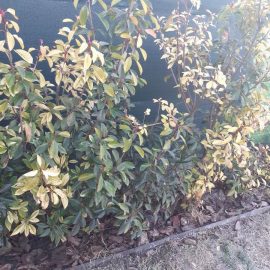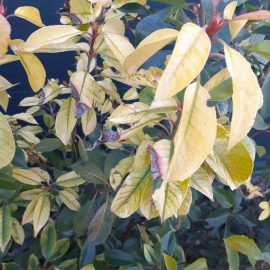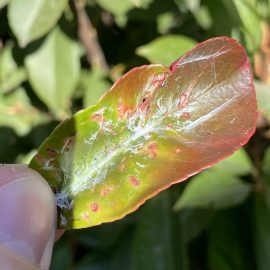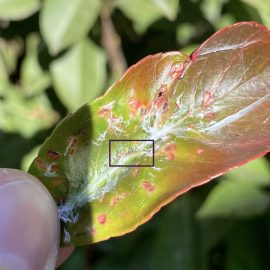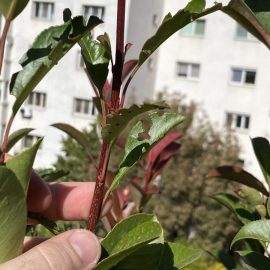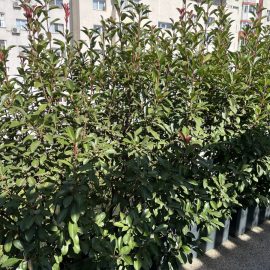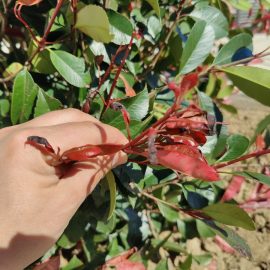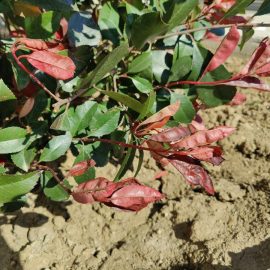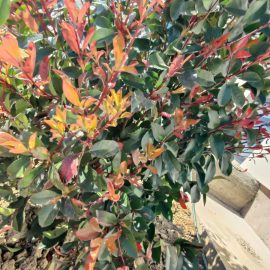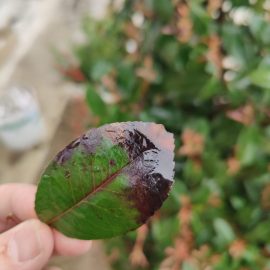Photinia x fraseri, planting guide and care work
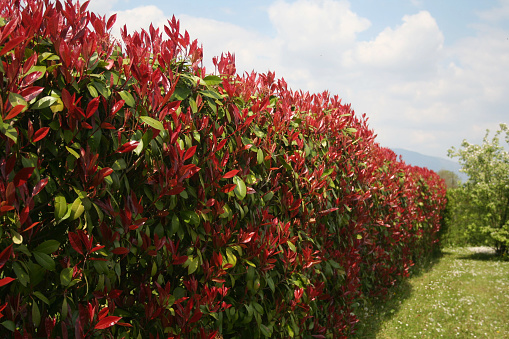
Photinia x fraseri is a decorative shrub, part of the Rosaceae family and of the genus Photinia. This species is generally used to create hedges. Photinia x fraseri appeared after the cross between Photinia glabra and serratifolia. Plants of this genus are native to Asia and Central America.
The leaves of these species are whole or serrated, alternatively arranged. Most species of this genus have green leaves throughout the year but are species that lose their leaves as the intensity of the photosynthesis process decreases. Flowering takes place in early summer and the fruits are small, red.
Types of Photinia x Fraseri
Photinia x fraseri „Red Robin”: This is the most commonly planted variety. It grows between 2-4 m tall. It is a variety with a compact growth.
Photinia × fraseri „Little Red Robin” : It resembles “red robin” but the growth is less intense, reaching a maximum height of 1 m.
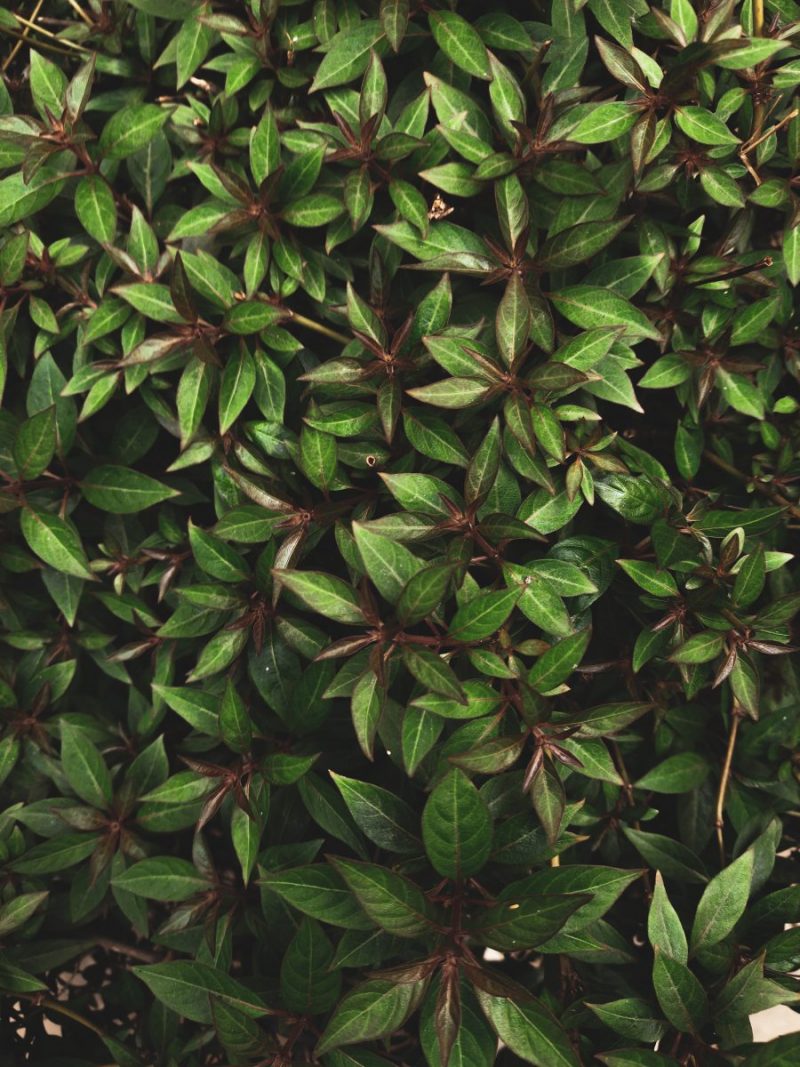
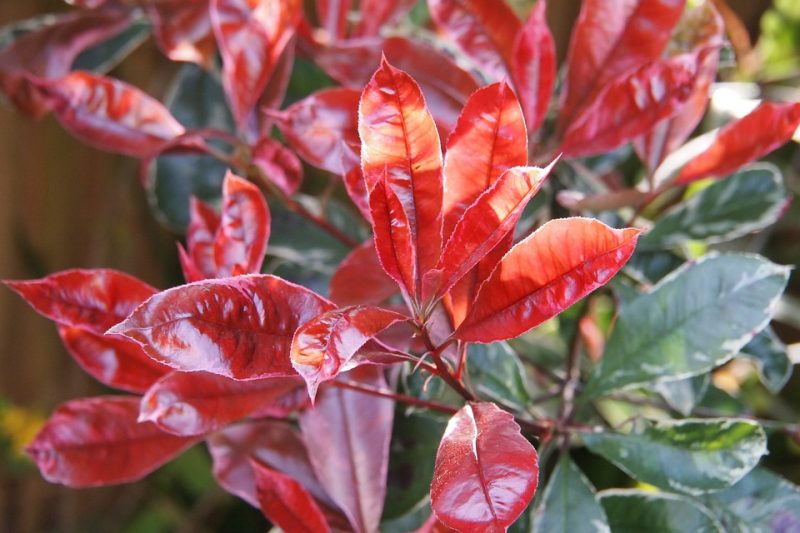
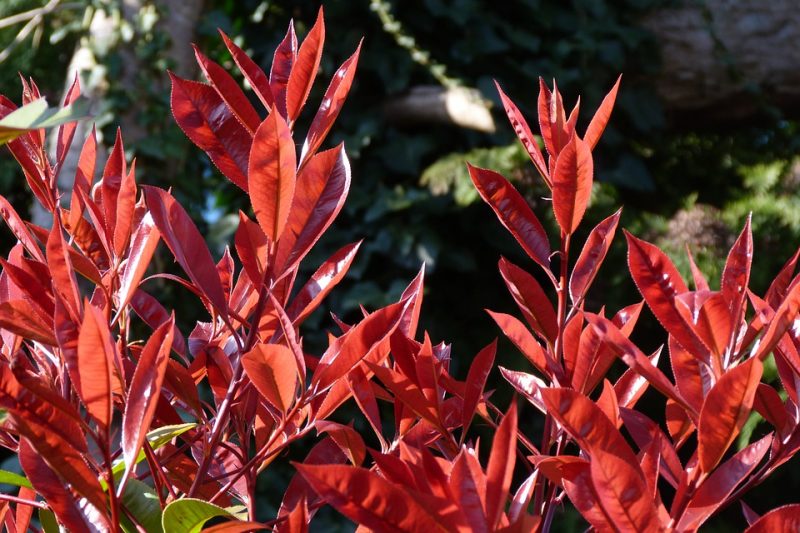
Environmental factors
Light
Photinia x fraseri in warm climates prefers places with partial shade, away from strong sunlight. Their location in completely shaded areas will limit the flowering process, so planting is recommended to be carried out in places facing north or east.
Watering
Watering is recommended to be done regularly, since this species is resistant to short periods of drought.
Temperature
This species prefers moderate temperatures, can withstand frost but for short periods of time.
Soil
Photinia prefers soils with high aeration and drainage capacity.
Fertilization
Photinia, like any other plant species, needs micro and macro elements, so it is recommended to apply a balanced fertilization.
Recommended products
-
You can find products on a different store
Change Store -
You can find products on a different store
Change Store -
You can find products on a different store
Change Store -
You can find products on a different store
Change Store -
You can find products on a different store
Change Store -
You can find products on a different store
Change Store -
You can find products on a different store
Change Store -
You can find products on a different store
Change Store -
You can find products on a different store
Change Store -
You can find products on a different store
Change Store -
You can find products on a different store
Change Store -
You can find products on a different store
Change Store -
You can find products on a different store
Change Store -
You can find products on a different store
Change Store -
You can find products on a different store
Change Store -
You can find products on a different store
Change Store -
You can find products on a different store
Change Store -
You can find products on a different store
Change Store -
You can find products on a different store
Change Store -
You can find products on a different store
Change Store -
You can find products on a different store
Change Store -
You can find products on a different store
Change Store -
You can find products on a different store
Change Store -
You can find products on a different store
Change Store
Propagation
Propagation is done by cuttings, which are taken from 1-year-old shoots and are rooted in early spring, in a special substrate.
Recommended products
-
You can find products on a different store
Change Store -
You can find products on a different store
Change Store -
You can find products on a different store
Change Store -
You can find products on a different store
Change Store -
You can find products on a different store
Change Store -
You can find products on a different store
Change Store -
You can find products on a different store
Change Store -
You can find products on a different store
Change Store -
You can find products on a different store
Change Store -
You can find products on a different store
Change Store -
You can find products on a different store
Change Store -
You can find products on a different store
Change Store -
You can find products on a different store
Change Store -
You can find products on a different store
Change Store -
You can find products on a different store
Change Store -
You can find products on a different store
Change Store -
You can find products on a different store
Change Store -
You can find products on a different store
Change Store -
You can find products on a different store
Change Store -
You can find products on a different store
Change Store -
You can find products on a different store
Change Store -
You can find products on a different store
Change Store -
You can find products on a different store
Change Store -
You can find products on a different store
Change Store
Pruning
Pruning is best done in winter, when the density of the leaves is not so high.
Recommended products
-
You can find products on a different store
Change Store -
You can find products on a different store
Change Store -
You can find products on a different store
Change Store -
You can find products on a different store
Change Store -
You can find products on a different store
Change Store -
You can find products on a different store
Change Store -
You can find products on a different store
Change Store -
You can find products on a different store
Change Store -
You can find products on a different store
Change Store -
You can find products on a different store
Change Store -
You can find products on a different store
Change Store -
You can find products on a different store
Change Store -
You can find products on a different store
Change Store -
You can find products on a different store
Change Store -
You can find products on a different store
Change Store -
You can find products on a different store
Change Store -
You can find products on a different store
Change Store -
You can find products on a different store
Change Store -
You can find products on a different store
Change Store -
You can find products on a different store
Change Store -
You can find products on a different store
Change Store -
You can find products on a different store
Change Store -
You can find products on a different store
Change Store -
You can find products on a different store
Change Store
Diseases and pests
These species are attacked by pests such as moths, red spider mites and aphids. Common diseases are powdery mildew, root rot and fruit stains.














































































































































































































































































































































































































































